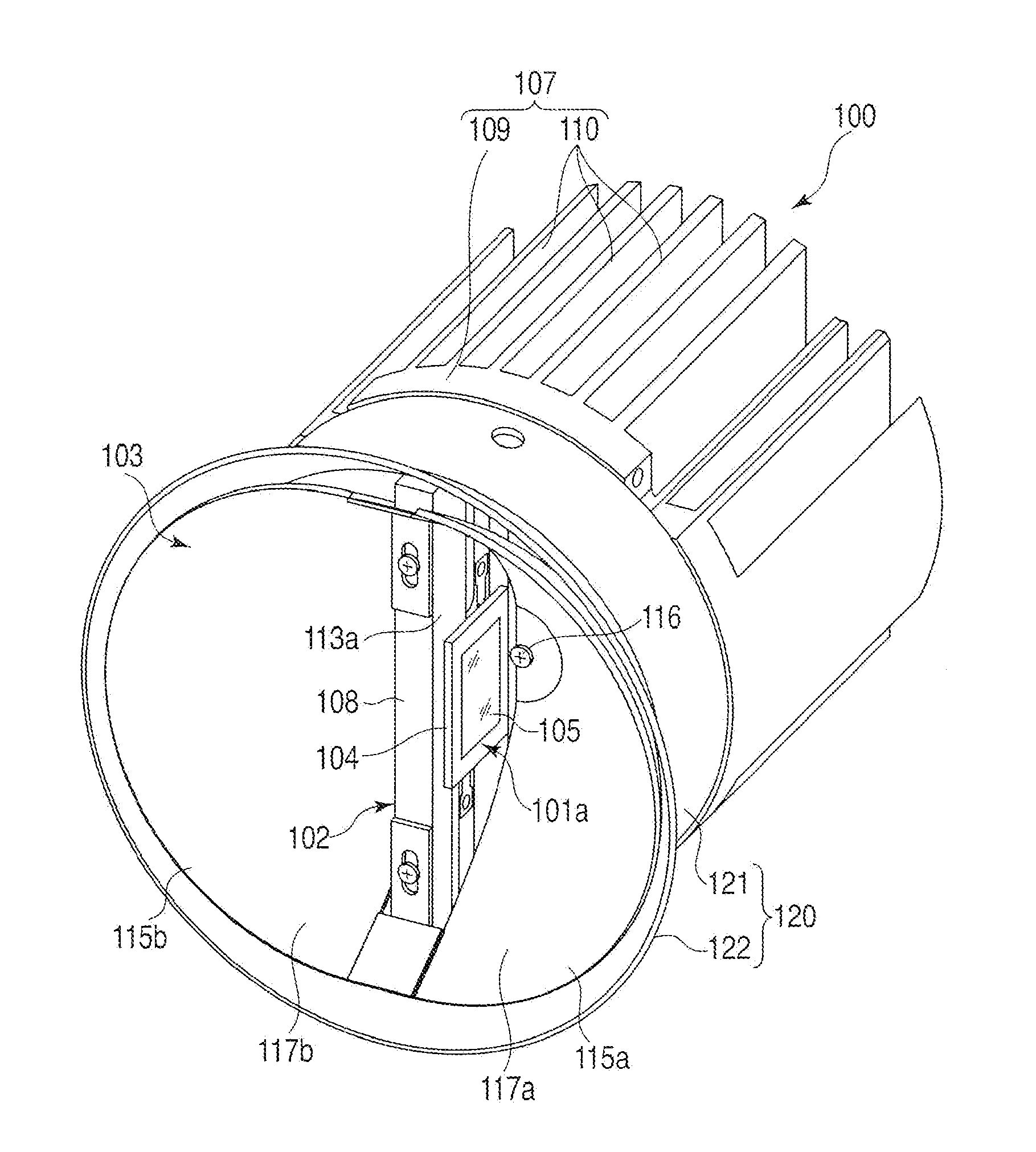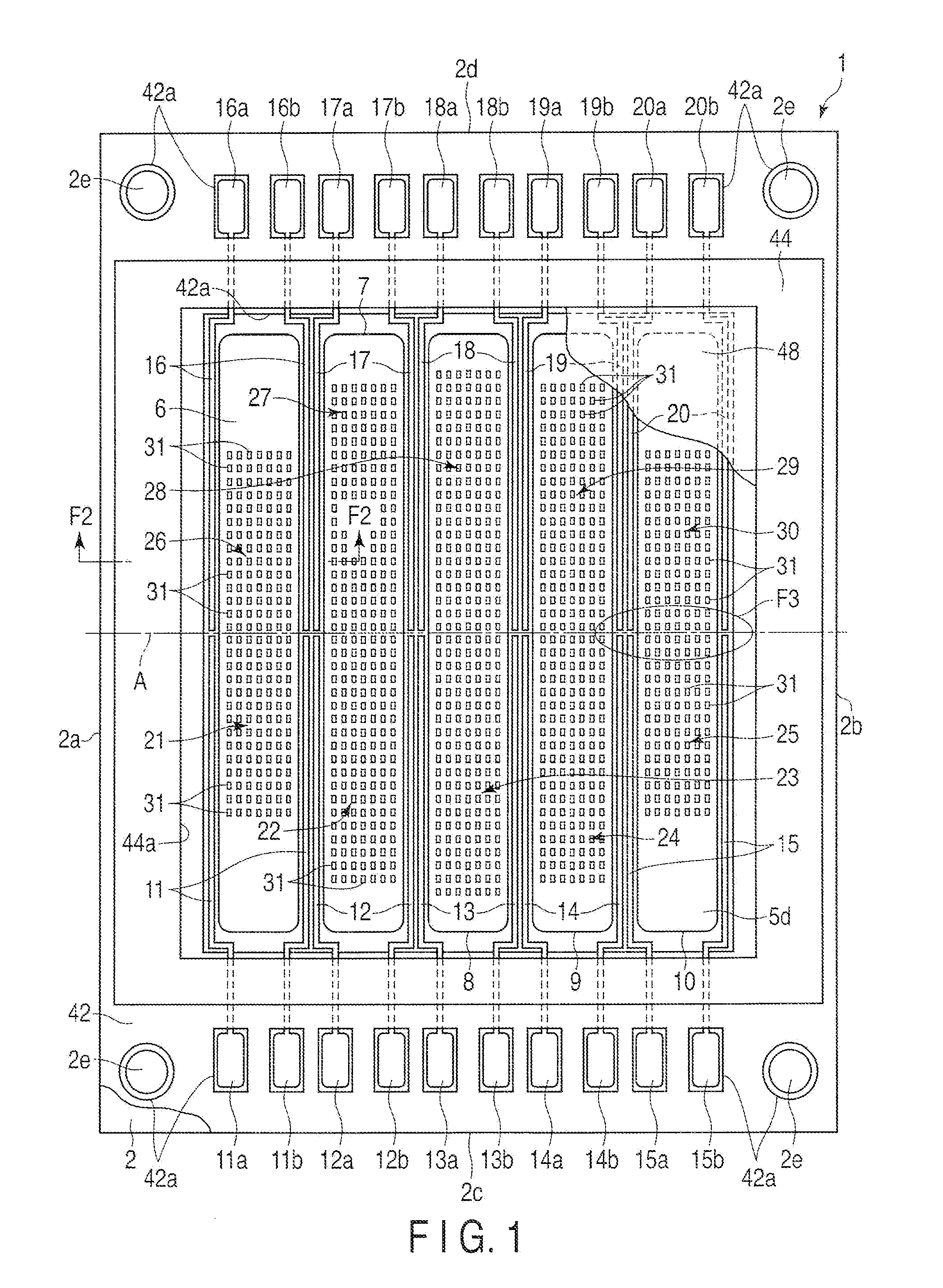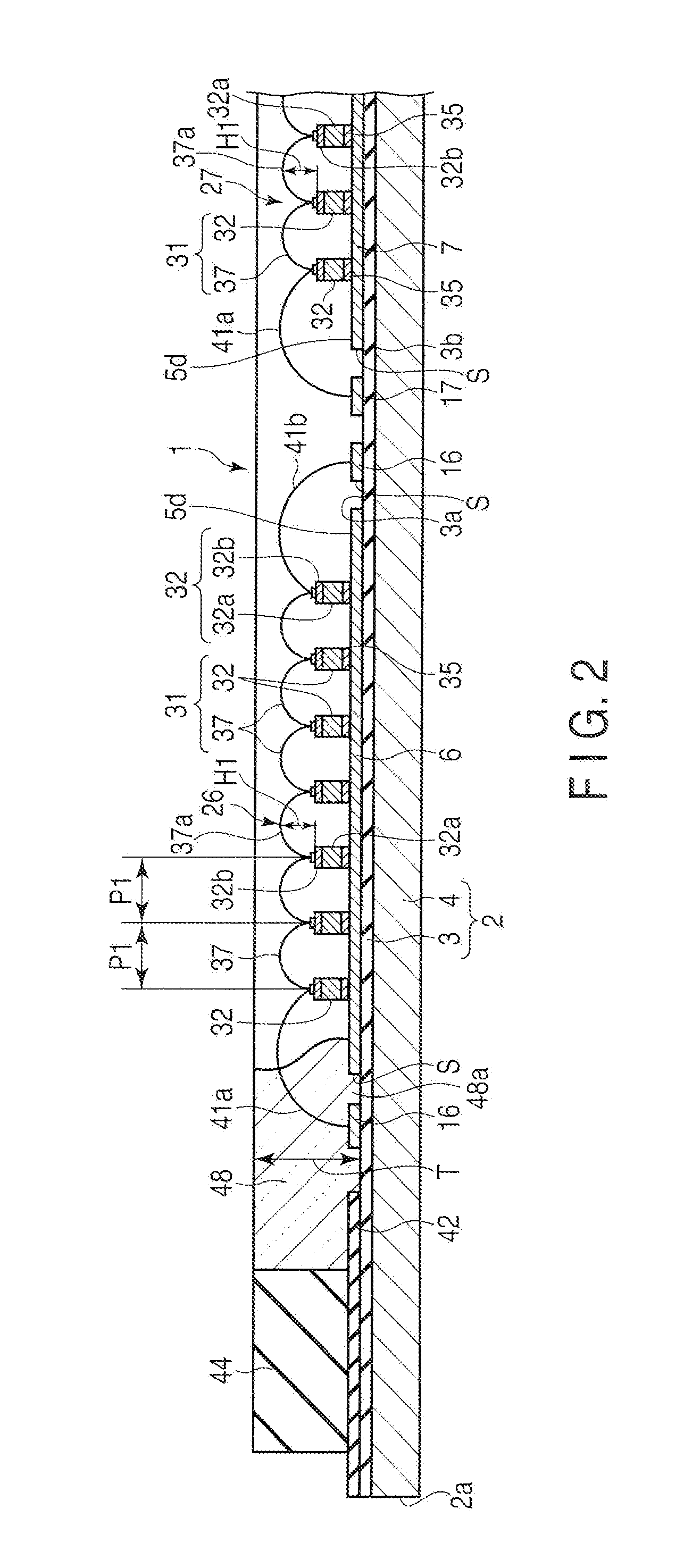Light emitting module and illumination apparatus
a technology of light emitting modules and illumination apparatuses, which is applied in the direction of light and heating apparatus, semiconductor devices of light sources, planar light sources, etc., to achieve the effect of reducing costs, facilitating the work of mounting light emitting diodes on the module substrate, and improving light emitting module manufacturing efficiency
- Summary
- Abstract
- Description
- Claims
- Application Information
AI Technical Summary
Benefits of technology
Problems solved by technology
Method used
Image
Examples
first embodiment
[0076]A first embodiment according to the present invention will now be described hereinafter with reference to FIG. 1 to FIG. 8.
[0077]FIG. 1 and FIG. 2 disclose a chip-on-a-board (COB) light emitting module 1. The light emitting module 1 is arranged on a focal point of a projector lens group of, e.g., a spotlight and used as a light source of the spotlight.
[0078]The light emitting module 1 comprises a module substrate 2 functioning as a base. As shown in FIG. 1, the module substrate 2 is formed into a rectangular shape having a pair of wide sides 2a and 2b and a pair of narrow sides 2c and 2d. The wide sides 2a and 2b are parallel to each other, and the narrow sides 2c and 2d are also parallel to each other. Further, the module substrate 2 has four corner portions. A fitting hole 2e is formed in each corner portion of the module substrate 2.
[0079]As shown in FIG. 2, the module substrate 2 is constituted of an insulating layer 3 made of synthetic resin and a metal plate 4. The insul...
second embodiment
[0170]FIG. 9 and FIG. 10 disclose a second embodiment according to the present invention.
[0171]The second embodiment is different from the first embodiment in particulars concerning the die bond materials that bonds the light emitting diode elements to the first to fifth metal reflective layers. A basic configuration of the light emitting modules excluding the die bond material is equal to that of the first embodiment. Therefore, in the second embodiment, like reference numerals denote constituent parts equal to those in the first embodiment, thereby omitting a description thereof.
[0172]As shown in FIG. 9 and FIG. 10, die bond materials 35 are applied to cover first to fifth metal reflective layers 6 to 10 and interposed between silver layers 5c and a substrate 32a of respective light emitting diode elements 32. The die bond material 35 covers an entire region of each silver layer 5c excluding side edge portions of this layer.
[0173]In other words, the die bond material 35 continuous...
third embodiment
[0190]FIG. 11 to FIG. 13 disclose a third embodiment according to the present invention.
[0191]The third embodiment is different from the first embodiment in particulars concerning the die bond materials that bonds light emitting diode elements to first to fifth metal reflective layers. A basic configuration of a light emitting module excluding the die bond materials is equal to that in the first embodiment. Therefore, in the third embodiment, like reference numerals denote constituent parts equal to those in the first embodiment, thereby omitting a description thereof.
[0192]FIG. 11 is a view associated with FIG. 3 of the first embodiment and mainly shows a state of fifth and tenth light emitting portions 25 and 30 bonded to an upper side of a fifth metal reflective layer 10.
[0193]As shown in FIG. 11, a die bond material 35 that bonds light emitting diode elements 32 of light emitting diode strings 31 to a light reflecting surface 5d of the fifth metal reflective layer 10 has a plura...
PUM
 Login to View More
Login to View More Abstract
Description
Claims
Application Information
 Login to View More
Login to View More - R&D
- Intellectual Property
- Life Sciences
- Materials
- Tech Scout
- Unparalleled Data Quality
- Higher Quality Content
- 60% Fewer Hallucinations
Browse by: Latest US Patents, China's latest patents, Technical Efficacy Thesaurus, Application Domain, Technology Topic, Popular Technical Reports.
© 2025 PatSnap. All rights reserved.Legal|Privacy policy|Modern Slavery Act Transparency Statement|Sitemap|About US| Contact US: help@patsnap.com



